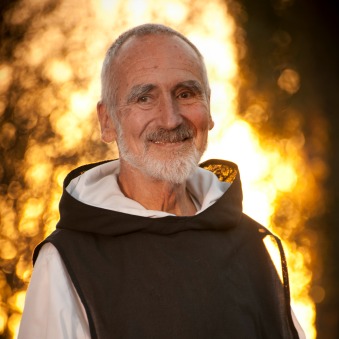Lent has been misunderstood as a time of grim repentance, but it is meant to be a time of joy, the joy of a fresh start.
Lent is an ancient word for springtime; it designates a season of burgeoning inner and outer life. Too often Lent has been misunderstood as a time of grim repentance, but it is meant to be a time of joy, the joy of a fresh start, the joy that greening meadows and blossoming trees proclaim each spring.
Ash Wednesday marks the beginning of this special time for sharpening our spiritual focus. Its name comes from an ancient rite in which those who start their Lenten practice are signed with ashes on their foreheads. These ashes come from the burnt palm branches of last year’s Palm Sunday celebration.
This year, receiving the ash cross was especially meaningful to me, for I had read Marcus Borg and John Dominic Crossan’s book The Last Week. It starts with Palm Sunday. When you read it you will understand that the Palm Sunday procession in which we carry palm branches, as the people did who welcomed Jesus into Jerusalem, is a counter-demonstration to the entry of Pontius Pilate into the city from the other side. Pilate came on horseback surrounded by soldiers; Jesus came riding on a donkey as Prince of Peace. This and his other non-violent demonstrations cost Jesus his life. So, when we are signed with these ashes we are reminded of the “cost of discipleship” (the title of a book by Dietrich Bonhoeffer, whom the Nazis executed for his faith).
While the priest signs the faithful with ashes he says, “Remember that from dust you came and to dust you will return.” (It always reminds me of the little kid who notices a pile of dust under the bed and cries, “Mommy, Mommy, there is someone under my bed, but I can’t tell whether he is coming or going.”) All forms come and go. The implication of this impermanence is: NOW is the time, and the time is short. But the sentence doesn’t ring with the joy of living in the Now of God’s presence. That’s why I like the other formula better, the one that is more often used in today’s liturgy: “Turn away from sin, and believe the Gospel.” Sin stands for everything that cuts us off from our authentic self, from one another, and from the divine ground of our being; Gospel stands for the Good News that the Kingdom of God is at hand. The world order in accord with God’s design is only waiting for us to make it a reality here and now.
And how do we make God’s design for the world a tangible reality? By overcoming sin in its three dimensions: we becoming authentic by pulling ourselves together; we celebrate our belonging to the universe by sharing with one another; we ground ourselves in God by letting ourselves down into God’s silence to drink from the fountain of life, the very source of our being.
The traditional terminology for pulling ourselves together is Fasting (meaning of course a lot more than discipline in eating and drinking). Sharing with others is called Almsgiving (meaning more than doling out alms). And for grounding ourselves in Being, the term is Prayer (meaning more than saying prayers). Fasting, almsgiving and prayer are the three ways of aligning ourselves and our world with God’s design, the three intersecting pathways into the joy of Lent.
The three are inseparably intertwined. How could I become authentic unless I ground myself in God and share? How could I truly share unless I found my authentic Self that is grounded in God? How could I ground myself in God unless I found in God that authentic Self of mine that is one with all and so will joyfully share? These intertwined dimensions help each one of us find our own customized observance of Lent.
What I commit myself to do in order to become more authentically myself (“Fasting”) will spring from alert attention to my personal coaching by God’s Spirit within me (i.e. ”Prayer”), and what exactly I give to others (“Almsgiving”) will be the unique fruit of this uniquely personal interaction. It may be money I can give to the poor because I save it by depriving myself of the kinds of food or drink that are not good for my body. It may be extra energy for helping someone in need, energy I gain by fasting from media intake that is not healthy for my mind. It may consist in things I can spare and give away because I get rid of clutter that makes authentic living more difficult. Or the fruit of my Lenten practice may be a service to others for which I find time by following a more disciplined schedule. Or – well you get the point. There is this intimately personal aspect to one’s Lenten commitment, yet it finds expression in public action; the two are as two sides of one coin.
In the monastery each monk gets a personally selected book to guide us through Lent. The book I mention above is one I’d recommend: Marcus J. Borg & John Dominic Crossan: The Last Week: What the Gospels Really Teach About Jesus’s Final Days in Jerusalem.



Comments are now closed on this page. We invite you to join the conversation in our new community space. We hope to see you there!